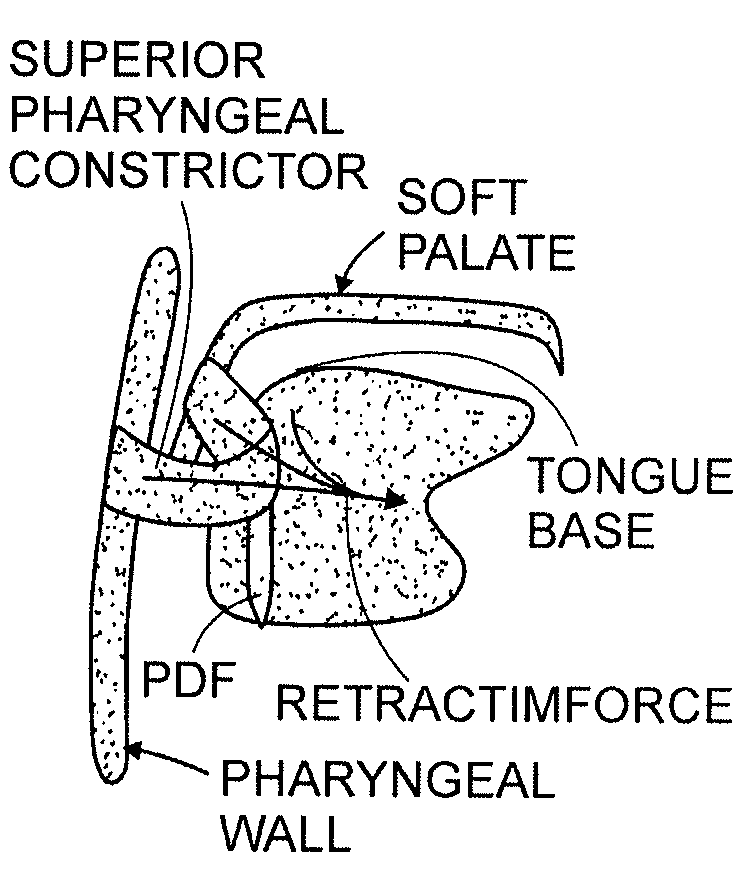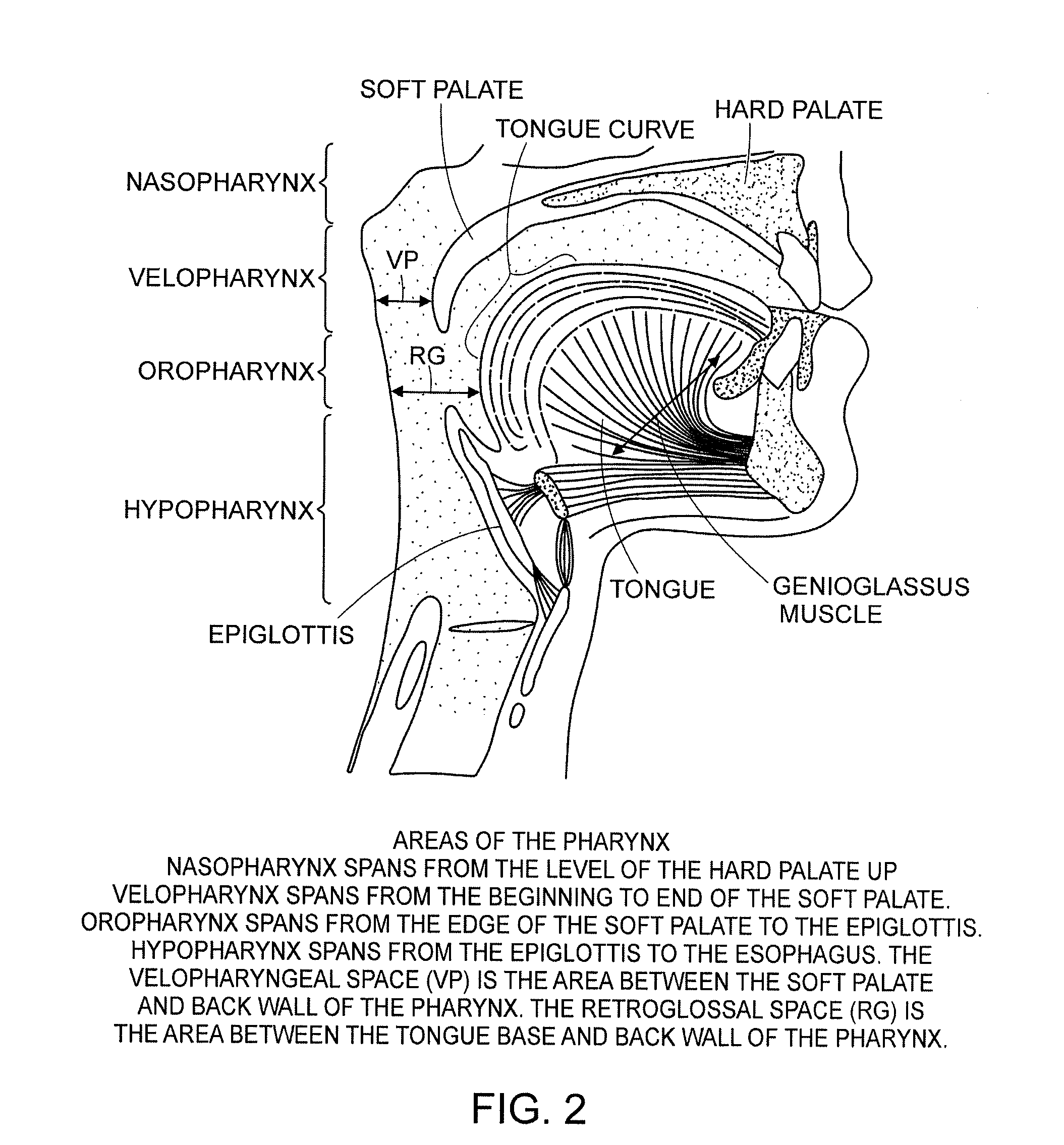Methods and devices for treating sleep apnea and snoring
a technology for maintaining upper airway patency and sleep apnea, which is applied in the direction of snoring prevention, restraining devices, prostheses, etc., can solve the problems of reducing airway pressure, reducing comfort, and reducing airway pressure, so as to increase tension, increase comfort, and improve comfort for patients
- Summary
- Abstract
- Description
- Claims
- Application Information
AI Technical Summary
Benefits of technology
Problems solved by technology
Method used
Image
Examples
examples
1. Retractor Member (FIG. 6)
[0282]Disclosed here, referring to FIG. 6A, is a tissue retractor 601, which includes a retractor member (i.e., the retractor head 620), a shaft 610, and an anchor member. One end of the shaft 610 connects to the retractor member 620 and the other end of the shaft 610 connects to an anchor member (not shown). Referring to FIGS. 6B-6E, the tissue retractor 601 retractor member 620 is inserted into a tissue 650 by a needle 635 and the tissue retractor 601 automatically deploys to its working shape.
[0283]Referring now to FIG. 6E, the retractor head 620 prevents at least a portion of the tissue 650 (e.g., the tongue base) from deforming. For example, in one embodiment, the deployed tissue retractor 601 has a retractor head 620 that prevents deformation of at least a portion of the tongue base to prevent obstruction of the patient's airway.
[0284]The preferred qualities for a retractor head 620 that rests upon tissue 650 (e.g., tongue base mucosa) are that its ...
PUM
 Login to View More
Login to View More Abstract
Description
Claims
Application Information
 Login to View More
Login to View More - R&D
- Intellectual Property
- Life Sciences
- Materials
- Tech Scout
- Unparalleled Data Quality
- Higher Quality Content
- 60% Fewer Hallucinations
Browse by: Latest US Patents, China's latest patents, Technical Efficacy Thesaurus, Application Domain, Technology Topic, Popular Technical Reports.
© 2025 PatSnap. All rights reserved.Legal|Privacy policy|Modern Slavery Act Transparency Statement|Sitemap|About US| Contact US: help@patsnap.com



